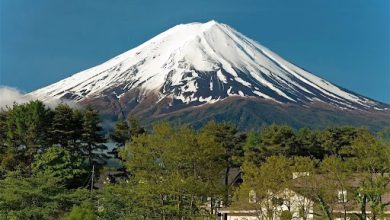Top 10 Worst Smells in the World

Thioacetone is known as one of the worst smelling compounds, causing vomiting, making it one of the top 10 worst smells in the world according to science. Bad smells can range from rotting corpses and fishy odors to skunk spray, creating an unpleasant experience for our olfactory senses.
Some other notoriously awful smells include durian fruit, which can be compared to turpentine and rotten onions, and the repugnant odor of sweaty feet. Unfortunately, these unpleasant scents are not easily eliminated, as skunk odor, for example, can linger for weeks.
Discovering the worst smells in the world can be an intriguing and stomach-churning journey into our sense of smell.
Thioacetone: The Vomit-inducing Compound
|
Thioacetone is regarded as one of the worst smelling compounds known to science. This organosulfur compound is known to induce vomiting and is commonly described as having a putrid, rotten egg-like smell that can linger in the air for a long time. It has a strong, overpowering odor that can permeate through various materials and has been compared to the smell of decay, feces, and vomit. The smell of Thioacetone has a profound impact on human sensory perception and can elicit strong physical reactions. Scientific research has been conducted to understand its odor and the vomit-inducing properties it possesses. |
The Stinking Corpse Lily: A Putrid Stench
| Topic: | Top 10 Worst Smells in the World |
| Heading: | The Stinking Corpse Lily: A Putrid Stench |
| Subheading: | Overview of the Stinking Corpse Lily’s smell |
The Stinking Corpse Lily, also known as the AKA Stinking Corpse Lily, emits a smell that closely resembles that of a decaying and rotting corpse. It is notorious for its putrid stench, which can be quite overwhelming for the senses. In fact, the scent has been compared to a mixture of the distinct odors of fish and sweaty socks.
This unique plant releases chemicals that create an offensive smell, attracting pollinating insects such as flies and beetles. The aroma helps it lure these insects for effective pollination. While the scent may be repulsive to humans, it serves a crucial ecological purpose for the Stinking Corpse Lily’s survival.
Next time you come across this fascinating flower, prepare yourself for a fragrance that is truly unforgettable. Brace your senses as the Stinking Corpse Lily unleashes its distinctive and pungent odor, reminiscent of decaying flesh mixed with fishy and sweaty sock notes.
Cooking And Baking Odors
Strong fragrances, such as perfumes, can be overwhelming and unpleasant to some individuals. The powerful scents from these fragrances can linger in the air and even cause headaches or nausea for those who are sensitive to them.
Burnt food smells from the oven are another common source of unpleasant odors. These smells can be pungent and can fill the entire house, requiring thorough ventilation to remove the lingering aroma.
Cooking and baking in general can produce a variety of smells that may not necessarily be considered pleasant. From the lingering smell of fish and onions to the potent aroma of certain spices, these odors can be overpowering and undesirable.
Overall, cooking and baking can result in a wide range of strong fragrance odors that can impact the olfactory senses and may be considered some of the worst smells in the world.

Credit: www.youtube.com
Smelly Pets: Cats And Dogs
| Smelly Pets: Cats and Dogs |
| Highlighting the odors associated with cats and dogs |
|
When it comes to smells, pets like cats and dogs can sometimes be the culprits. There are specific scents associated with these smelly pets that can be quite off-putting. One common odor is the scent of urine, especially when pets have accidents indoors. Another unpleasant smell is the odor emitted by pet feces. Additionally, pets can leave behind a musky smell, especially if they haven’t been bathed or groomed regularly.
To address and manage these pet smells, it is important to regularly clean and maintain litter boxes or designated outdoor areas for pets to relieve themselves. Regular bathing and grooming can also help reduce odors. Using pet-friendly air fresheners or odor neutralizers can further help combat the smells. It’s important to note that certain pet breeds may have stronger odors than others, so researching and selecting a pet that fits your preferences can also be a consideration.
Durian: A Fruit With Turpentine-like Stench
|
One of the worst smells in the world is that of the durian fruit. Native to Southeast Asia, this fruit is known for its complex and pungent odor. The durian has been described as having a stench similar to turpentine, rotten onions, and sewage. The origin of this strong smell is still a subject of debate, but it is believed to come from a combination of sulfur compounds. Despite its unpleasant smell, the durian is a popular fruit in many Asian countries, prized for its unique flavor and creamy texture. It is often referred to as the “king of fruits”. However, its strong odor has led to it being banned in some public places and hotels. For those who can get past the smell, the durian offers a sweet and custard-like taste that is unlike any other fruit. It is definitely an acquired taste, but for some, the unique combination of flavors is worth the less-than-pleasant olfactory experience. |
The Smelliest Substances Known To Man
Thioacetone is regarded as one of the worst smelling compounds known to science. This organosulfur compound is known to induce vomiting. Another example is the Stinking Corpse Lily, which literally smells like a dead, decaying and rotting corpse, with a hint of fish and sweaty socks. The fruit known as Durian, native to Southeast Asia, has been described as having an odor similar to turpentine, rotten onions, and sewage.
In addition to these, the odor from a skunk is notoriously difficult to get rid of due to its sulfur-based spray. It sticks to anything it comes in contact with and can linger for weeks if not properly treated.
Best And Worst Smells According To A Study
According to a study, the top 10 worst smells in the world include Thioacetone, the Stinking Corpse Lily, and the odor of durian fruit. These smells are known to induce vomiting and have been described as rotting corpses, turpentine, and sewage.
| Best and Worst Smells According to a Study |
| The study revealed that the best smell, according to participants, is vanilla. Known for its soothing and comforting scent, vanilla is a popular choice worldwide. On the other hand, the worst smell, as per the study, is sweaty feet. The pungent odor of sweaty feet is universally disliked and can be quite unpleasant. These findings highlight the universal preferences people have when it comes to smells. |
| It’s interesting to note that our olfactory preferences are often influenced by cultural and personal experiences. While certain scents may be universally enjoyable, such as the sweetness of vanilla, individual preferences can vary significantly. Some may adore the smell of freshly baked bread or the earthy aroma of rain, while others may cringe at the thought of these scents. |
| We would love to hear from our readers about their favorite and least favorite smells. Share with us the smells that bring you joy or make you wrinkle your nose in disgust. Our olfactory experiences can tell a lot about our unique preferences and memories. Let’s engage in a fragrant conversation! |
The Challenge Of Removing Skunk Odor
Skunk odor is known to be one of the most challenging smells to remove. The unique properties of skunk spray make it difficult to eliminate. Skunk spray contains a sulfur-based compound that sticks to surfaces it comes in contact with, making the odor last for weeks if not properly treated. The strong, pungent smell is almost toxic and can be hard to tolerate.
Removing skunk odor requires special techniques and products. Some tips for skunk odor removal include:
- Act quickly: The longer the skunk spray sits, the harder it is to remove.
- Vinegar and water solution: Mix equal parts vinegar and water to create a solution that can be used to remove the odor.
- Hydrogen peroxide, baking soda, and dish soap mixture: This combination can be effective in neutralizing the skunk odor.
- Professional cleaning: In severe cases, it may be necessary to hire professionals to remove the skunk odor.
By following these tips and techniques, you can successfully eliminate skunk odor and make your environment smell fresh again.
Distasteful And Rotten Smells
| Examples of Disgusting Smells |
|---|
| Thioacetone |
| Stinking Corpse Lily |
| Durian |
| Skunk Odor |
Thioacetone, an organosulfur compound, is considered one of the worst smelling compounds in the world, known to induce vomiting. The Stinking Corpse Lily emits a putrid odor reminiscent of a decaying corpse, combined with hints of fish and sweaty socks. Durian, a fruit native to Southeast Asia, has an overpowering smell described as a mix of turpentine, rotten onions, and sewage. Skunk odor, due to its sulfur-based spray, is extremely hard to eliminate and can linger for weeks.
The foul smell of these substances can be attributed to the presence of sulfur compounds, which have a distinctively repulsive odor. Skunk odor, in particular, is difficult to eliminate due to its sulfur-based nature, causing it to stick to surfaces and linger for an extended period of time if not properly treated.
Battle Of The Bad Smells: In The House
There are several common household items that can emit unpleasant odors, making our living spaces less enjoyable. Some examples include:
- Cooking and baking smells
- Strong fragrances, such as perfumes
- Cleaning product odors
- Oven burnt food
- Smelly pets, especially cats and dogs
To maintain a fresh and odor-free living environment, it is important to employ effective strategies. Here are a few tips:
- Ensure proper ventilation and air circulation in your home
- Frequently clean and disinfect surfaces, especially in areas prone to odors
- Use odor-absorbing materials, such as baking soda or activated charcoal
- Regularly empty trash cans and clean garbage disposal units
In addition to eliminating bad smells, it is equally important to prevent them from occurring in the first place. Consider the following:
- Properly store food to avoid rotting and unpleasant odors
- Keep pet areas clean and well-maintained
- Avoid smoking indoors and dispose of cigarette butts properly
- Regularly clean and maintain ventilation systems, such as air conditioners and filters
Dealing With Offensively Strong Smells
| Top 10 Worst Smells in the World |
|
The world is filled with a variety of smells, some pleasant and some not so pleasant. When it comes to offensive odors, there are a few that stand out as the worst in the world. Thioacetone, for example, is known to induce vomiting with its horrendous smell. Another strong contender is the Durian fruit, native to Southeast Asia, which has been described as having an odor similar to turpentine, rotten onions, and sewage. These offensive smells can have a significant impact on our senses, making it difficult to focus and even causing physical discomfort. So how can we deal with these overpowering odors? It’s essential to find ways to cope and neutralize these unpleasant smells. Some suggestions include using air fresheners, opening windows for ventilation, or using odor-absorbing materials like activated charcoal. |
Conclusion
In the world of unpleasant odors, the top 10 worst smells are enough to make anyone’s stomach turn. From the putrid stench of thioacetone to the repulsive aroma of the durian fruit, these smells are not for the faint of heart.
Whether it’s the smell of a decaying corpse or the lingering stench of skunk spray, these odors have the power to stick around for weeks if not properly treated. It’s safe to say that these scents are ones that we would all prefer to avoid.




